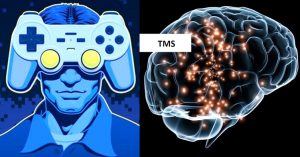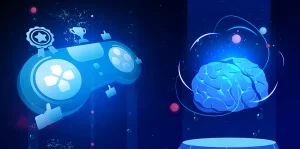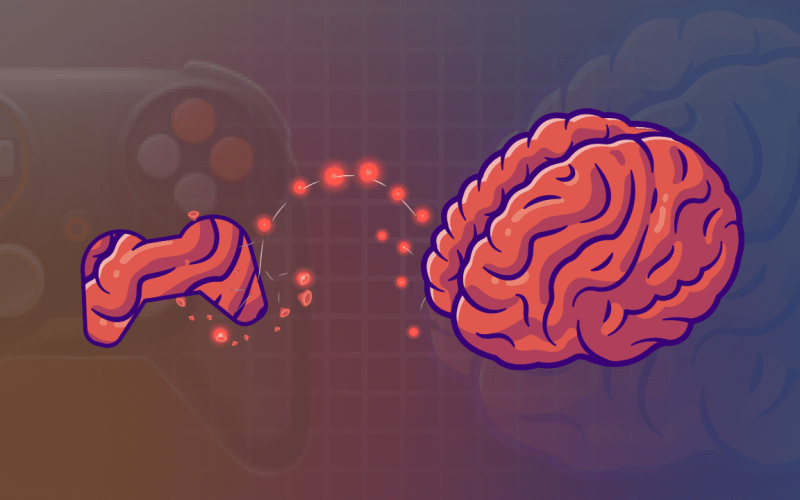Introduction:
Imagine a classroom where learning feels more like play, where students eagerly engage with complex concepts, and where curiosity drives exploration. Meet Dr. Emily Parker, a seasoned educator and avid gamer, who has dedicated her career to exploring the intersection of gaming and education. With a wealth of experience and a passion for innovative teaching methods, Dr. Parker is excited to dive into the educational advantages of gaming and share insights on how it can revolutionize traditional approaches to learning.
1. The Fusion of Gaming and Education
In recent years, educators have begun to recognize the potential of gaming as a powerful tool for engaging students and enhancing learning outcomes. At its core, gaming offers immersive experiences that captivate players’ attention and motivate them to overcome challenges and achieve goals. These elements align closely with the goals of education, making gaming an ideal medium for delivering content and fostering critical thinking, problem-solving, and collaboration skills.
2. Unlocking Educational Advantages of Gaming

Gaming offers a myriad of educational advantages that traditional teaching methods often struggle to achieve. Firstly, gaming enhances engagement by tapping into students’ intrinsic motivation to progress and succeed within the game’s world. The interactive nature of gaming encourages active participation and fosters a sense of agency and ownership over the learning process. As students navigate virtual worlds, solve puzzles, and make decisions, they develop critical thinking skills and gain a deeper understanding of complex concepts.
Moreover, gaming promotes personalized learning experiences by adapting to individual students’ abilities, preferences, and pace of learning. Through adaptive algorithms and branching narratives, games can tailor content and difficulty levels to match students’ learning needs, ensuring that every student receives instruction at their appropriate level. This personalized approach not only increases student motivation and engagement but also promotes mastery and deeper learning.
Additionally, gaming facilitates the development of a diverse range of skills, from problem-solving and decision-making to creativity and collaboration. In multiplayer games, students work together towards common goals, negotiate roles and responsibilities, and communicate effectively with teammates, fostering teamwork and social skills in the process.
3. Strategies for Educational Advantages of Gaming
Integrating gaming into education requires careful planning and consideration to ensure that it aligns with learning objectives and enhances the overall learning experience. One effective strategy is to incorporate game-based assessments, where students demonstrate their understanding and skills within the context of a game. These assessments provide a more authentic and engaging way to evaluate student learning while allowing educators to gather valuable insights into students’ strengths and areas for improvement.
Another approach is to leverage educational gaming platforms that offer a wide range of games specifically designed for learning purposes. These platforms often provide analytics and progress tracking features, enabling educators to monitor student performance and adjust instruction accordingly. By selecting games that align with curriculum standards and learning goals, educators can seamlessly integrate gaming into existing lesson plans and promote deeper learning experiences.
Furthermore, designing gamified curricula can transform traditional lesson plans into dynamic and interactive learning experiences. By incorporating game elements such as quests, challenges, and rewards, educators can create a more engaging and immersive learning environment that motivates students to actively participate and learn. Gamified curricula encourage students to set goals, track progress, and celebrate achievements, fostering a sense of accomplishment and intrinsic motivation to learn.
4. Case Studies: About Educational Advantages of Gaming

Numerous schools and educators have embraced gaming as a means of enhancing learning experiences and engaging students in meaningful ways. For example, a middle school in California implemented a math game that allowed students to practice mathematical concepts through solving puzzles and completing challenges. The game not only improved students’ math skills but also boosted their confidence and motivation to learn.
In another case, a high school history teacher in New York City used a historical simulation game to immerse students in key events and periods of history. By experiencing history firsthand through the game, students gained a deeper understanding of historical events and developed critical thinking skills as they navigated complex political and social dynamics.
These case studies demonstrate the transformative impact of gaming on student engagement, motivation, and learning outcomes. By leveraging gaming as a tool for education, schools and educators can create dynamic and immersive learning experiences that inspire curiosity, foster creativity, and prepare students for success in the digital age.
5. Addressing Challenges and Misconceptions
Despite its benefits, integrating gaming into education faces challenges and misconceptions that must be addressed to realize its full potential. One common concern is the potential for excessive screen time and its impact on students’ health and well-being. However, research suggests that when used in moderation and with purpose, gaming can be a valuable educational tool that enhances learning without detriment to students’ overall health.
Accessibility is another consideration, as not all students may have access to the necessary technology or resources to participate in gamified learning activities. To address this challenge, educators can explore alternative methods of incorporating gaming elements into their instruction, such as board games or low-tech simulations. By ensuring that gaming is accessible to all students, educators can create inclusive learning environments that promote equity and diversity.
Additionally, some educators may be skeptical of the academic value of gaming and its ability to support learning objectives. However, numerous studies have demonstrated the effectiveness of gamified learning approaches in improving student outcomes and fostering deeper engagement with course material. By providing evidence-based research and practical examples, educators can overcome misconceptions and build support for integrating gaming into education.
6. The Future of Gaming in Education
As technology continues to advance, so too does the potential of gaming in education. Emerging technologies such as virtual reality (VR) and augmented reality (AR) offer new opportunities for immersive and interactive learning experiences. Imagine students exploring ancient civilizations through VR simulations or conducting virtual science experiments in a simulated laboratory environment.
Furthermore, the rise of gamified assessments presents a shift away from traditional testing methods towards more authentic and engaging forms of evaluation. By embedding assessment tasks within games, educators can assess students’ understanding and skills in real-time while providing immediate feedback and support. Gamified assessments promote deeper learning and critical thinking skills while reducing test anxiety and promoting a growth mindset among students.
Conclusion: Embracing Gaming as a Tool for Learning
As Dr. Emily Parker has demonstrated through her expertise and experiences, gaming holds immense potential as a tool for education, offering engaging, interactive, and personalized learning experiences that captivate students’ imaginations and deepen their understanding of course material. By embracing gaming in the classroom, educators can inspire curiosity, foster creativity, and empower students to become active participants in their own learning journey. Let us unlock the educational advantages of gaming and embark on a journey to transform education for generations to come.
In conclusion, gaming has the power to revolutionize education by making learning more engaging, interactive, and personalized. Through thoughtful implementation and strategic planning, educators can harness the educational potential of gaming to inspire curiosity, foster creativity, and empower students to become lifelong learners in the digital age.










